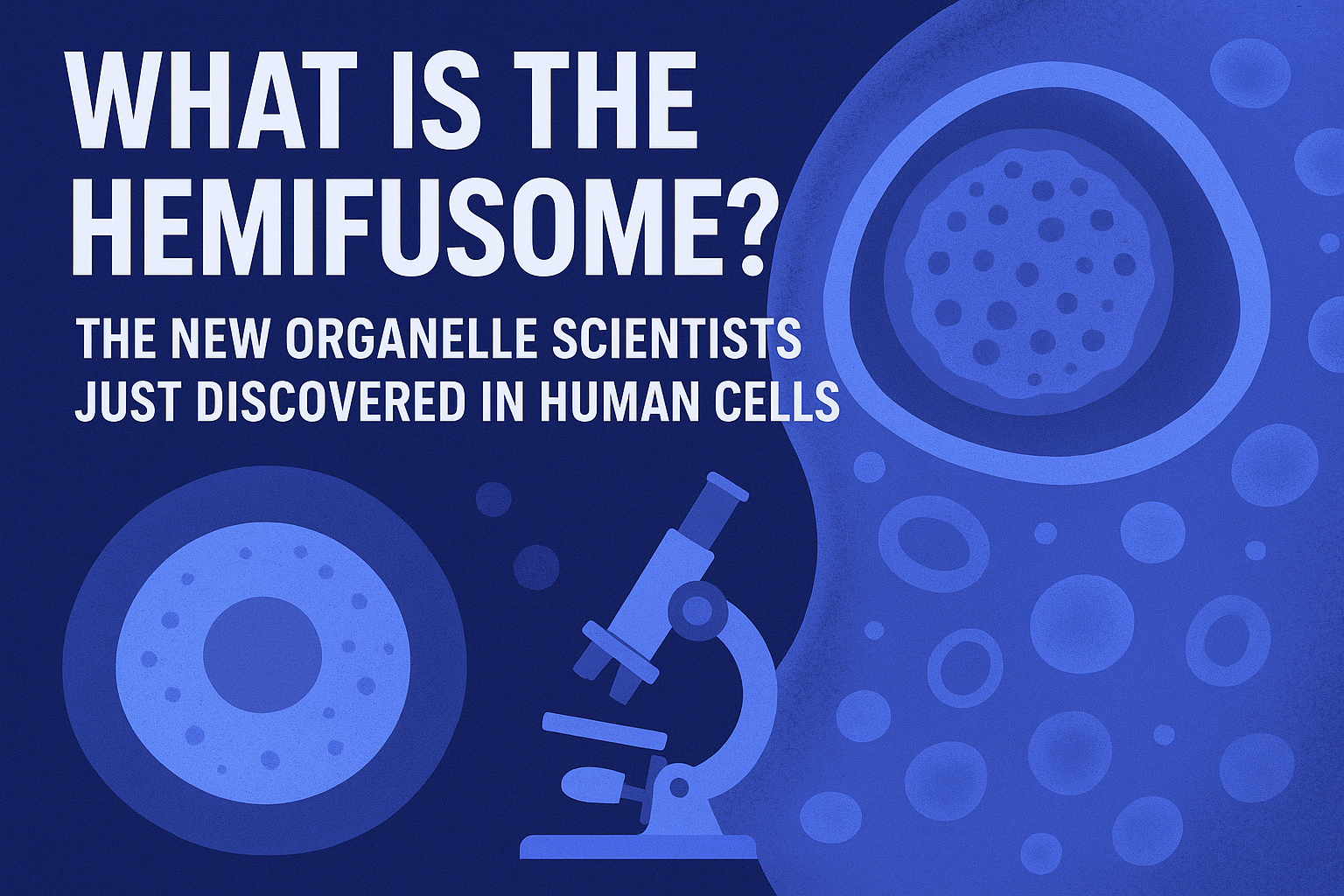In 2025, science delivered a surprise that has shaken the very foundations of biology textbooks: the discovery of a new organelle inside human cells, named the hemifusome.
For decades, we thought we had mapped every component of a cell—from the nucleus and mitochondria to the endoplasmic reticulum. Yet, hidden within our microscopic universe, this new structure managed to remain unseen until now. The finding not only rewrites our understanding of human biology but also opens up thrilling possibilities for medicine and research.
What Is the Hemifusome?
The hemifusome is a newly identified organelle—a specialized compartment inside cells that performs unique tasks. Just as mitochondria generate energy and ribosomes build proteins, the hemifusome appears to have its own vital role.
Though research is still in early stages, initial studies suggest it may be involved in cellular communication and molecular transport, helping cells exchange signals and adapt to their environment. Its elusive nature meant that for years, traditional microscopes and staining techniques couldn’t detect it.
The breakthrough came in June 2025, when advanced imaging technologies finally revealed its existence.
Why Did It Take So Long to Discover?
One of the most fascinating aspects of the hemifusome is how it hid in plain sight. The reasons include:
- Limitations of past technology: Until recently, microscopes lacked the precision to capture organelles at this scale.
- Complexity of cellular structures: Cells are dense environments, filled with overlapping organelles, making small and unusual ones difficult to spot.
- New imaging tools: With breakthroughs in optical computing and high-resolution microscopy, scientists could finally visualize this new compartment with clarity.
In essence, the hemifusome is a reminder that biology is still full of mysteries waiting to be uncovered.
Why the Hemifusome Discovery Matters
This isn’t just another academic curiosity—it could reshape science and medicine.
1. Medical Advances
By understanding the hemifusome’s function, researchers may uncover new pathways for treating diseases linked to cellular miscommunication, such as:
- Neurodegenerative disorders
- Cancer cell signaling
- Immune system dysfunction
2. Scientific Breakthroughs
The discovery forces scientists to redraw the map of the human cell. Biology students may soon learn about hemifusomes alongside mitochondria and lysosomes.
3. Technology & Research Tools
This breakthrough also highlights how emerging technologies—like AI-assisted imaging and optical computing—are accelerating discoveries that were once impossible.
Why You Should Care
Even if you’re not a scientist, the hemifusome represents something universally human: our endless capacity to discover the unknown. Just when we thought we had biology figured out, the cell—our most basic unit of life—reveals a hidden surprise.
It’s a humbling reminder that science isn’t static; it’s a living, evolving journey. And who knows? Tomorrow’s discoveries may redefine our understanding of life even further.
Conclusion
The hemifusome is more than a new organelle—it’s a symbol of human curiosity and scientific progress. Its discovery proves that our world, even at the tiniest scale, still holds secrets waiting to be unveiled.
So, next time you look at a biology diagram, remember: the picture isn’t complete. The hemifusome has taken its place in the story of life, and it’s only the beginning of what we’ll learn from it.
Stay tuned—the next hidden treasure in our cells could be right around the corner.

Leave a Reply